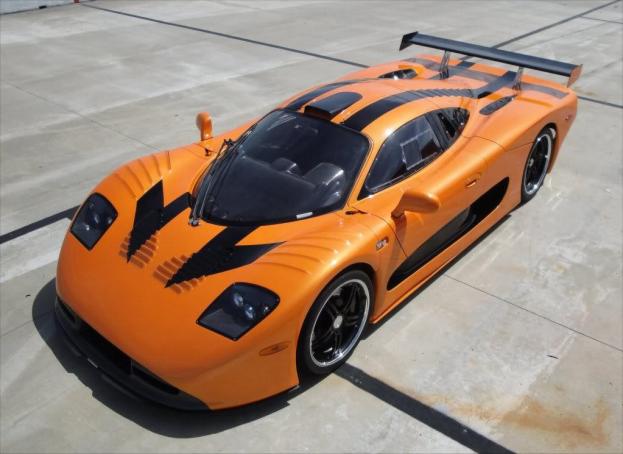 Rossion and Mosler may sound like two names we just made up, but they’re bona fide American carmakers and, soon, they’ll be one. RP Performance, the outfit that owns Rossion, has bought Mosler Automotive.
Rossion and Mosler may sound like two names we just made up, but they’re bona fide American carmakers and, soon, they’ll be one. RP Performance, the outfit that owns Rossion, has bought Mosler Automotive.
Why should you care? Because even though Mosler doesn’t have the pedigree of Ferrari or Lamborghini, it has a history of building cars that are just as fast and exotic. Sometimes, even more.
Mosler Automotive got its start in 1985 with the Consulier GTP, a brutally fast and brutally ugly sports car powered by a 2.2-liter turbocharged Chrysler four. It so completely dominated the IMSA Supercar Series that it was banned.
More recently, Mosler built the MT900S Photon (top photo), sporting a 7.0-liter V8 with 530 horsepower and 515 pound-feet of torque. Pushing a car that weighs roughly the same as a Mazda MX-5 Miata, those horses could purportedly get the Photon past the 200 mph mark.
Originally called 1G Racing, Rossion established a niche as the exclusive U.S. importer of the British Noble supercars. It eventually bought the rights to the Noble M400 and M12, which it builds as the Q1.

Rossion was sketchy on the details of its purchase of Mosler, but the resulting cars will probably combine the strengths of what came before. The Mosler name will be retired, but Rossion hopes to leverage the company’s experience with carbon fiber in future cars.
“Rossion looks forward to using this technology and expertise to introduce exciting new models in 4, 6 and 8 cylinder configurations to the Rossion line up,” the company’s press release said.
There’s a definitely a gap to fill in the newly consolidated lineup. While the MT900S Photon costs close to $400,000, the Q1 is a slightly less insane $103,000 to $109,000. We’ll have to see which end of the price spectrum Rossion sticks with.
Mosler may have flown under the radar for most of its existence, but the cars that wore its badge were still impressive. Hopefully Rossion will be able to keep up the momentum.
Is a Mosler or Rossion your ideal supercar? Tell us in the comments.
Editors' Recommendations
- Lamborghini teases its first all-electric supercar ahead of Friday’s big reveal
- Fiat-Chrysler pressured dealers to take extra inventory to boost sales numbers
- Most people want to keep their cars away from full self-driving, study says
- DieselGate continues to haunt Volkswagen as massive class-action suit is filed
- Ferdinand Porsche was 100 years ahead of his time with his 1900 hybrid


